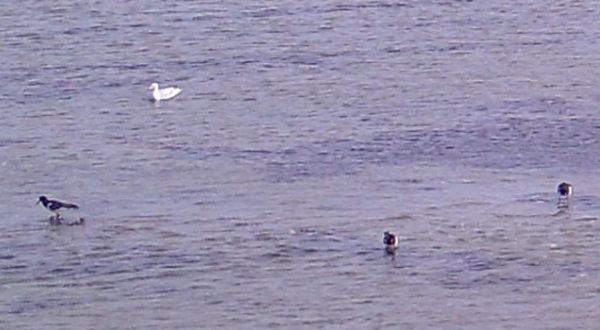Alternative 2- Wildlife Camera
This subsection will provide information on a wildlife camera monitoring setup used by another researcher on the same study site. The setup consisted of pairs of 3-metre tall supports and wildlife cameras (Bushnell Trophy Cam). The reader should note supports of this height were required to keep the cameras out of the water at high tide.
Cost: Each support and camera pair cost about 325 € to purchase and install. After this initial investment, the operation and maintenance costs are limited to battery replacement. The cost of the batteries themselves is minimal, but the cost of sending a researcher (20 € per hour) to the study site to replace them is not. Batteries would need replacing once every month. With travel, it must be expected that a researcher will need half a day (3.5 hours) to replace the batteries. This brings the operation cost to 3.5 hours/month x 20 €/hour or 70 € /month.
Temporal frequency: The Bushnell Trophy Cam is capable of capturing images up to every 1 minute. Though, pragmatically, it is probably best to only take images every 3 to 5 minutes as birds generally spend a few minutes foraging in a relatively small area. Therefore, one can expect about 14,400 measurements per month.
Disturbance: The presence of the wildlife cameras and their supports was not noted to cause any change in seabird behaviour. Seabirds could be observed feeding and not paying much attention to the cameras. However, it is not known whether there may be any impact on seabirds or other aspects of the site’s ecology if a large number of camera and support pairs are installed on the tidal flat. Barring the use of an excessive amount of supports, this method is expected to cause virtually no disturbance.
Deployability: Once installed, wildlife cameras can take measurements at any time and in any weather. That is, there is a 100% likelihood of deployability.
Spatial Coverage: Due to the angle at which they capture images, the wildlife cameras have a trapezoidal footprint. Nonetheless, that footprint can be approximated into a rectangular footprint of 30 m x 30 m or 900 m2.
Resolution: The Bushnell Trophy Cams installed at 3 metres above the tidal flat have a resolution comparable to the Inspire 2 drone at 20 metres above the tidal flat. Figure 1 offers an example of what can be expected from the wildlife cameras in terms of resolution. In other words, medium and large birds are identifiable.

